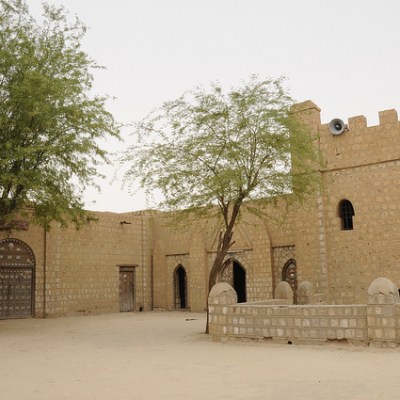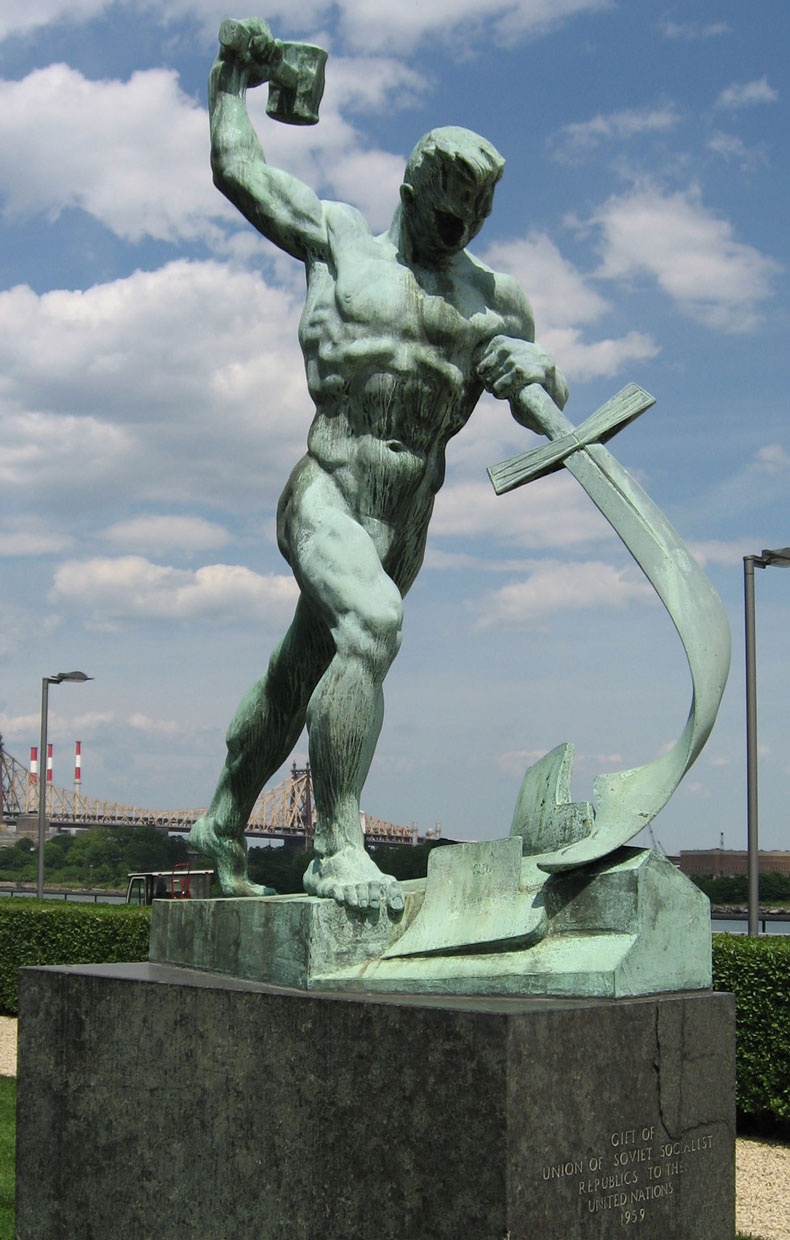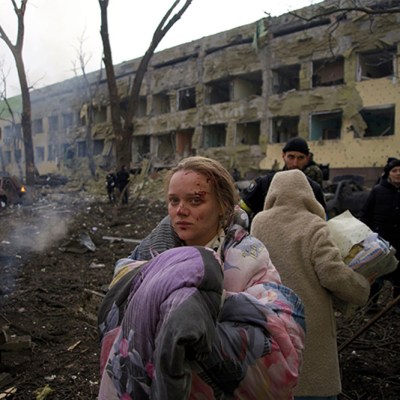
 ‘Four things to see’ is sponsored by Bloomberg Connects, the free arts and culture app. Bloomberg Connects lets you access museums, galleries and cultural spaces around the world on demand. Download the app here to access digital guides and explore a variety of content.
‘Four things to see’ is sponsored by Bloomberg Connects, the free arts and culture app. Bloomberg Connects lets you access museums, galleries and cultural spaces around the world on demand. Download the app here to access digital guides and explore a variety of content.
Each week we bring you four of the most interesting objects from the world’s museums, galleries and art institutions, hand-picked to mark significant moments in the calendar.
On 24 October 1945, the United Nations charter came into force. Its aim was nothing less than to put an end to war. Since its establishment, the United Nations has intervened in innumerable war zones and embarked on peacekeeping missions around the world. While the UN’s missions have emphasised peace, it should not be forgotten that thousands of people have lost their lives carrying out their duties for the organisation.
As we mark United Nations Day, which takes place on 24 October every year, we turn our attention to the theme of peace. The notion encompasses much more than the absence of conflict or freedom from violence; it also embodies quiet and the pursuit of inner tranquillity. Artists have long explored peace in many of its aspects, through landscapes that evoke a sense of calm and stillness; invitations to escape the chaos of everyday life; social commentaries that highlight the urgent need for global harmony and collaboration, contrasting scenes of war with visions of hope. Here, we embrace the serenity of four artworks that offer unique reflections on peace.
Installation view of the Feuerle Collection, with Khmer deities from the 10th to the 13th century on Chinese platforms from Han dynasty China, dating from the 2nd century BC to the 2nd century AD. Photo: © Feuerle Collection

The Sound Room, John Cage and Désiré Feuerle
The Feuerle Collection, Berlin
The Sound Room is an immersive experience that embodies peace through quietude and sensory deprivation, as part of the Feuerle Collection. Housed in a repurposed Second World War bunker, the collection sets contemporary art alongside Imperial Chinese furniture and early Khmer sculptures, blurring cultural boundaries. Visitors are encouraged to not engage with their mobile devices in order to better engage with sounds and silences crafted by John Cage, fostering a tranquil atmosphere that encourages introspection in absolute darkness – a calming prelude to a deeper appreciation of the displays. Find out more on the Bloomberg Connects app by clicking here on your mobile device, or by scanning the QR code at the bottom of this page.
Ashokan Edict No. IX (3rd century BC). Chhatrapati Shivaji Maharaj Vastu Sangrahalaya (CSMVS), Mumbai

Ashokan Edict No. IX (3rd century BCE)
Chhatrapati Shivaji Maharaj Vastu Sangrahalaya (CSMVS), Mumbai
This ancient basalt stone bears Emperor Ashoka’s ninth edict, inscribed in Brahmi script, promoting ethical conduct and compassion. Dating back some 2,250 years, it advocates for the humane treatment of all living beings. At a time when rulers were given to wielding military might, Ashoka’s message of peace and moral governance sought to unify diverse subjects under a rubric of non-violence. Click here to find out more.
Untitled artwork accompanying the 2023 Nobel Peace Prize diploma (2021/23), Håkon Bleken. Photo: Thomas Widerberg; © the artist/Nobel Foundation 2023

Untitled artwork accompanying the 2023 Nobel Peace Prize diploma (2021/23), Håkon Bleken
Nobel Peace Center, Oslo
Works of art are integral to Nobel Prizes: each diploma features a specially commissioned piece, usually a painting that responds directly to the specific award. The diploma that accompanied the 2023 Nobel Peace Prize features a striking work by Norwegian artist Håkon Bleken, who was commissioned two years prior when he was 92; it was awarded to the activist Narges Mohammadi in recognition of her fight for human rights and women’s freedom from oppression in Iran. Click here to find out more.
Let Us Beat Swords into Ploughshares (1959 or earlier), Yevgeny Vuchetich. Installed outside the United Nations Headquarters, New York

Let Us Beat Swords into Ploughshares (1959), Yevgeny Vuchetich
United Nations Headquarters, New York
Yevgeny Vuchetich’s bronze sculpture vividly evokes the desire for peace. Depicting a man transforming a sword into a ploughshare, it embodies the biblical call to convert weapons of war into tools for cultivation. Gifted to the United Nations in 1959, the sculpture serves as a poignant reminder of humanity’s aspiration to replace conflict with cooperation and productivity. Click here to find out more.
![]() ‘Four things to see’ is sponsored by Bloomberg Connects, the free arts and culture app. Bloomberg Connects lets you access museums, galleries and cultural spaces around the world on demand. Download the app here to access digital guides and explore a variety of content or scan the QR code.
‘Four things to see’ is sponsored by Bloomberg Connects, the free arts and culture app. Bloomberg Connects lets you access museums, galleries and cultural spaces around the world on demand. Download the app here to access digital guides and explore a variety of content or scan the QR code.


